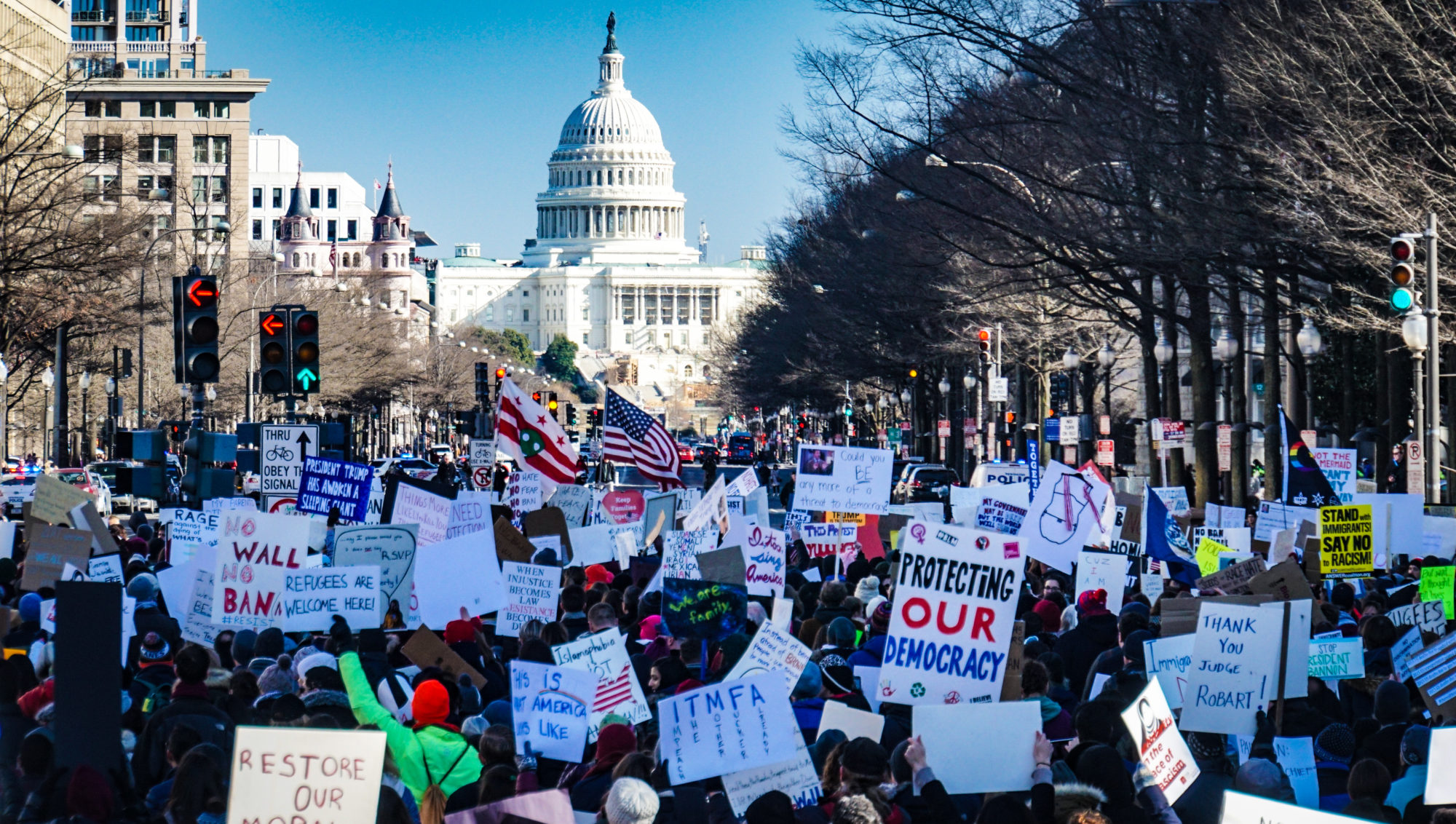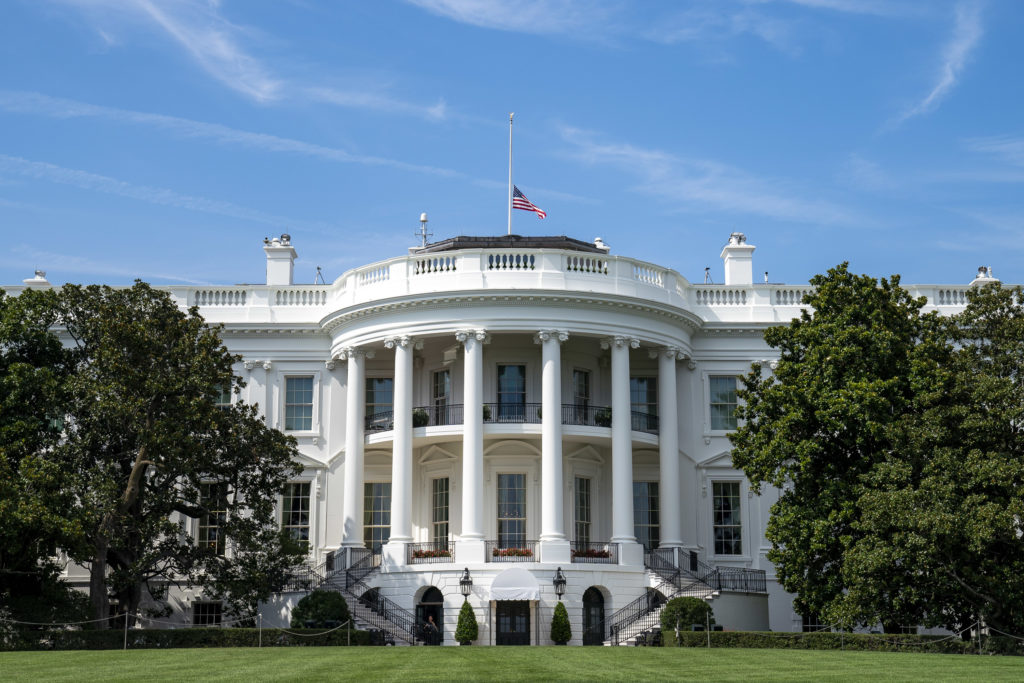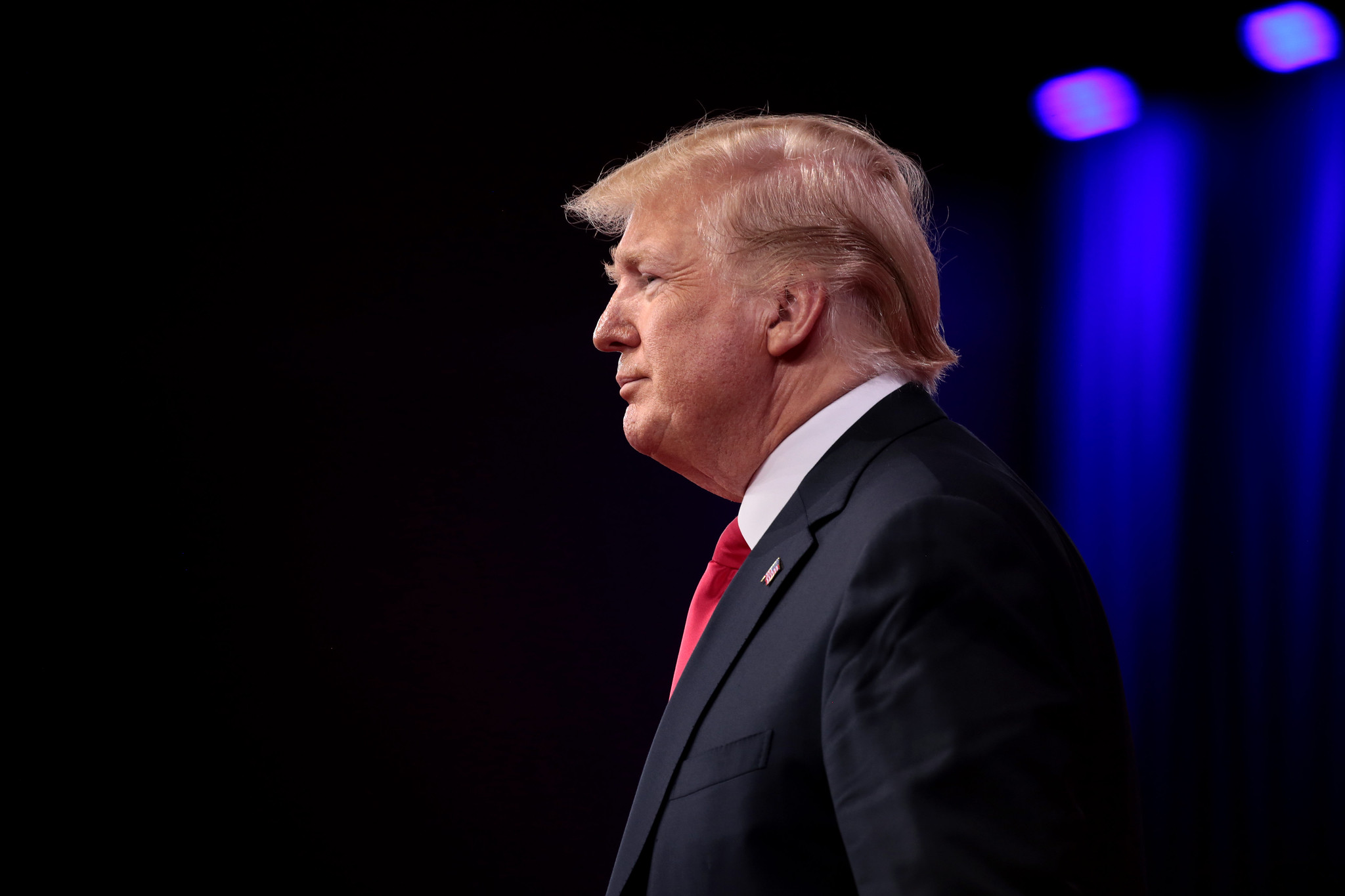How the 'Muslim Ban' Case Foreshadowed Trump v. United States

Published by The Lawfare Institute
in Cooperation With

The Supreme Court’s ruling on presidential immunity will surely be a decision that launches a thousand law review articles. The majority opinion by Chief Justice John Roberts, which establishes some level of immunity from criminal prosecution across a broad swathe of presidential activity, leaves no end of central questions unanswered: Where does the boundary lie between “core” presidential conduct, which receives absolute immunity, and the wider category of activity that may receive only presumptive immunity? For the latter category, how exactly can that presumption of immunity be rebutted? How can prosecutors prove a criminal case concerning only unofficial and non-immunized acts, if all evidence of official acts is itself ruled out by presidential immunity?
These questions will be crucial to understanding the import of the Court’s ruling and its practical effects on the presidency going forward. Underlying them, though, is a broader set of assumptions about the nature of the presidency and how to understand Donald Trump in relation to it. The majority disagrees substantively with the dissenting liberal justices on the proper scope of presidential immunity from criminal prosecution, but they also disagree on the extent to which the Court should consider the particular character of Trump in its evaluation of the presidency—a conceptual tangle that the courts have struggled with ever since Trump first came into office.
Roberts does not seem to be particularly interested in the specifics of the conduct that led to Trump’s indictment and landed this case before the Court. Rather than focusing on the specifics of the criminal case at hand, he’s preoccupied with drafting a ruling “for the ages,” as Justice Neil Gorsuch put it at oral argument. As the chief justice emphasizes repeatedly in his opinion, his concern is not “the President himself, but the institution of the Presidency.” Roberts explicitly advertises his lack of interest in the particular facts before him: “unlike the political branches and the public at large,” he writes, “we cannot afford to fixate exclusively, or even primarily, on present exigencies.”
In contrast, Justice Sonia Sotomayor’s dissent—joined by Justices Elena Kagan and Ketanji Brown Jackson—places Trump the man front and center. The dissent begins with a two-page description of Trump’s actions in the run-up to Jan. 6 and on the day itself—what Sotomayor characterizes as a “stark portrait of a President desperate to stay in power.” That, she argues, is “the backdrop against which this case comes to the Court,” and the context in which the matter of immunity must be considered. Rather than weighing questions of presidential immunity for “exercise of his core constitutional powers,” as Roberts does, Sotomayor insists: “Trump was not criminally indicted for taking actions that the Constitution places in the unassailable core of Executive power …. Instead, Trump was charged with a conspiracy to commit fraud to subvert the Presidential election.”
This debate between Roberts and Sotomayor is not new. It dates back to one of the first cases in which the Supreme Court confronted Trump’s particular approach to presidential power: Hawaii v. Trump, the travel ban case. During his 2016 campaign, Trump had repeatedly promised to implement a “Muslim ban” barring entry into the United States for people of that faith, at one point justifying that proposal by pointing to Franklin Roosevelt’s internment of Japanese Americans during World War II. After taking office, he rapidly signed an executive order limiting travel from several majority-Muslim countries. In response to a wave of litigation, his administration repeatedly revised the order to water down the extent to which it targeted Muslim travelers and construct justifications around a supposed national security purpose. The litigation eventually reached the Supreme Court in 2018, facing the justices with the question of to what extent Trump’s hateful comments could be weighed by courts in evaluating the travel ban’s legality.
In Hawaii, Roberts advocated an interpretive approach that depended on setting aside the specificities of Trump as president—in Hawaii, Trump’s promises to implement a “Muslim ban” and his hateful comments toward Muslims—from the office of the presidency more generally. Writing for a 5-4 majority along ideological lines, with the court’s four liberals in dissent, Roberts upheld the legality of the ban in significant part on the reasoning that the justices must not consider Trump’s anti-Muslim statements. The Court “must consider not only the statements of a particular President, but also the authority of the Presidency itself,” Roberts wrote then—foreshadowing his later insistence on addressing not just “the President himself, but the institution of the Presidency” in Trump v. United States.
While Roberts foregrounds the office of the presidency rather than the individual figure of the president, Sotomayor’s dissent in Hawaii insists on Trump’s primacy—just as the justice would do again eight years later in Trump. She begins her dissent with a recitation of Trump’s anti-Muslim comments and accuses the majority of “turning a blind eye to the pain and suffering” inflicted by the travel ban.
Hawaii is not directly on point when it comes to Trump v. United States. For one thing, it was a civil and not a criminal case; for another, it involved the use of an authority unambiguously within the scope of presidential power, rather than an exercise in identifying the borders of the president’s authority and the possibility of accountability for that authority’s abuse. Still, there is a throughline between Roberts’s approach in both cases when it comes to ignoring the person of Donald Trump—and Sotomayor’s insistence that Trump be placed front and center.
In his Trump opinion, Roberts cites Hawaii repeatedly for the proposition that “the President possesses ‘extraordinary power to speak to his fellow citizens and on their behalf’”—and, therefore, that presidential speech must be understood as within the “outer perimeter” of presidential power and is presumptively immune from criminal prosecution. (Or possibly it’s absolutely immune—the majority can’t seem to quite make up its mind on the matter.) That’s true, Roberts argues, even if the speech in question involves complaining about nonexistent election fraud or encouraging a potentially violent crowd to storm the Capitol. This is a fairly expansive view of what falls within the ambit of the president’s official duties and is therefore protected from prosecution. The specific text that Roberts cites in Hawaii about the president’s “extraordinary power” of rhetoric is drawn from a passage where the chief justice hints at his displeasure with Trump’s bigoted comments:
Our Presidents have frequently used that power to espouse the principles of religious freedom and tolerance on which this Nation was founded. … Yet it cannot be denied that the Federal Government and the Presidents who have carried its laws into effect have—from the Nation's earliest days—performed unevenly in living up to those inspiring words.
But, Roberts goes on, “the issue before us is not whether to denounce” Trump’s statements. Presidential power is presidential power, he suggests, no matter the nature of the person wielding it. In citing this passage in Trump v. United States, he seems to be applying that same logic to Trump’s use of his office to mount a coup. The disjuncture between the man and the office is jarring, and Roberts appears to be subtly acknowledging that. He just takes the view that it doesn’t matter.
Reading Trump v. United States alongside Hawaii also illuminates Sotomayor’s citation in her Trump dissent to one of the Court’s most notorious mistakes: Korematsu. She draws on Justice Robert Jackson’s dissent in that case to warn of the majority’s immunity ruling as a “loaded weapon” ready for misuse by future presidents. Sotomayor also pointed to Korematsu in her Hawaii opinion, comparing the Court’s upholding of the travel ban to its ruling refusing to strike down Japanese internment. In Hawaii, that segment of Sotomayor’s dissent prompted Roberts to include a chiding note declaring Korematsu “overruled in the court of history”—a proposition for which he also cited Robert Jackson’s dissent.
Sotomayor doesn’t directly cite Hawaii in her Trump v. United States dissent. But one way to read her more recent use of Korematsu is as a signal that she, too, understands herself as continuing the debate with the chief justice that began in Hawaii.
Historian Ernst Kantorowicz famously described medieval European conceptions of kingship as consisting of “two bodies,” the “body natural” (the mortal king himself) and the “body politic” (the monarchy, which persists over centuries). In Hawaii and Trump v. United States, Roberts and Sotomayor are arguing over how to understand the disjuncture between the president’s two bodies. Daphna Renan, in her 2019 article on the subject, examines how that duality manifests along a range of different axes. It’s a matter of not just whether the president’s crass words align with the high-minded responsibilities of the office but also whether the protections and privileges of the presidency persist in time across inhabitants of the office (whether former presidents can invoke executive privilege, for example), and whether the presidency is best understood as a vast and complex institution or a unitary reflection of the individual desires of a single man.
In this context, the dispute between Roberts and Sotomayor takes on an almost holographic quality. Viewed from one angle, Roberts is arguing that Trump must be divorced from the presidency as a whole and that the Court should consider only the institution in its ruling, whereas Sotomayor demands that the institution be placed in context of the man. Viewed from another angle, though, it’s Roberts who is insisting on the overlap of man and office—crafting an expansive immunity that shields past presidents by carrying forward the protections of the office even after they’ve left the role, and insisting that prosecutions of former presidents risk damaging the institution more broadly. Sotomayor, meanwhile, wants to cleave the president from the presidency by severing him from any such protection. Her position recalls that of the U.S. Court of Appeals for the D.C. Circuit in its en banc ruling denying Trump immunity: “For the purpose of this criminal case, former President Trump has become citizen Trump.”
For all that the immunity case represents a continuation of Roberts’s and Sotomayor’s argument in Hawaii, the ground has shifted underneath the justices since 2018. Hawaii concerned a use of facially legitimate presidential power for bigoted ends. Jan. 6 was an utterly lawless attempted coup. From 2018 to 2021, Trump’s conduct grew more brazen, less constrained by law, and more obviously focused on accruing benefit to himself alone.
Across both Hawaii and Trump v. United States, though, Roberts remains committed to both his view that Trump’s particular character must be set aside and his chiding, high-minded tone when it comes to responding to Justice Sotomayor and his other colleagues who insist on the importance of focusing on Trump personally. But as Trump’s conduct has grown more egregious, Roberts is forced to contort his legal reasoning more and more in order to maintain his posture of statesmanlike remove.
Hawaii was not an easy case; it was genuinely unclear as a matter of law to what extent the courts could legitimately consider Trump’s comments in weighing the travel ban’s legality. As Renan writes in her article, it concerned a broader question about how to understand the particular figure of an individual bigoted president in context of the larger institutional apparatus of the executive branch working to implement policy and construct national security justifications around a proposal motivated by animus. But the immunity case, by its very nature, is about Trump’s personal activity: It concerns a criminal prosecution of Trump specifically. There’s no conceivable argument that the institutional presidency, the “body politic,” committed a crime. Rather, the special counsel’s contention is that the body natural violated the obligations of his office.
Roberts’s opinion in Hawaii can make for a frustrating read because of its commitment to a formalism that strikes Sotomayor as blind to reality. But there’s nothing formalist about Trump v. United States. Rather, as a range of commentators have noted, the majority seems to adopt exactly the kind of flexible, pragmatic reasoning that conservative judges have in the past decried. If Roberts had taken a more disciplined approach, it might have been harder for him to define as potentially within the scope of presidential power activities like seeking to disrupt the formal counting of the electoral vote in Congress—a matter in which the president has no constitutional authority. This reasoning has the effect of incorporating as potentially legitimate uses of presidential authority activities that—before Trump—would likely have been considered clear abuses of power.
The irony is that, while high-mindedly announcing his intention to set aside “present exigencies” in favor of a more “farsighted” perspective, Roberts designed an opinion particularly suited for letting Trump off the hook. Consider, for example, his suggestion that Trump’s efforts to pressure state officials into upending the vote might constitute official presidential acts, because they were arguably meant to “encourage” those officials “to act in a manner that promotes the President’s view of the public good.” Such a standard is apt to be misused by a demagogic figure incapable of distinguishing his own interests from those of the country as a whole.
Or take Roberts’s anxiety over what he describes as the “prospect of an Executive Branch that cannibalizes itself, with each successive President free to prosecute his predecessors.” In Roberts’s view, immunity is needed to protect against this possibility. It is hard not to read this as a hedge by Roberts against future vengeful political prosecutions under a second Trump administration, which Trump himself has all but promised.
But Sotomayor rejects this line of argument, stating pointedly: “The Court should not have so little faith in this Nation’s Presidents.” The implication is that Roberts is allowing Trump’s abuses of authority to unduly shape his conception of how future presidents might themselves understand the office—that Trump’s approach to wielding presidential power for personal ends might become typical. Sotomayor, though, seems to believe that it should be possible to cleave Trump off and isolate him as an aberration. (Perhaps allowing for the criminal prosecution of former presidents for misuse of their office would help establish—or reestablish—expectations that presidents will not behave in such a way.)
Rightly or wrongly, Sotomayor is more confident that this particular man can be separated from the office when it comes to his influence going forward. The chief justice, in contrast, is so concerned about focusing on the presidency rather than on Donald Trump that he ends up redefining the presidency in Trump’s image.





